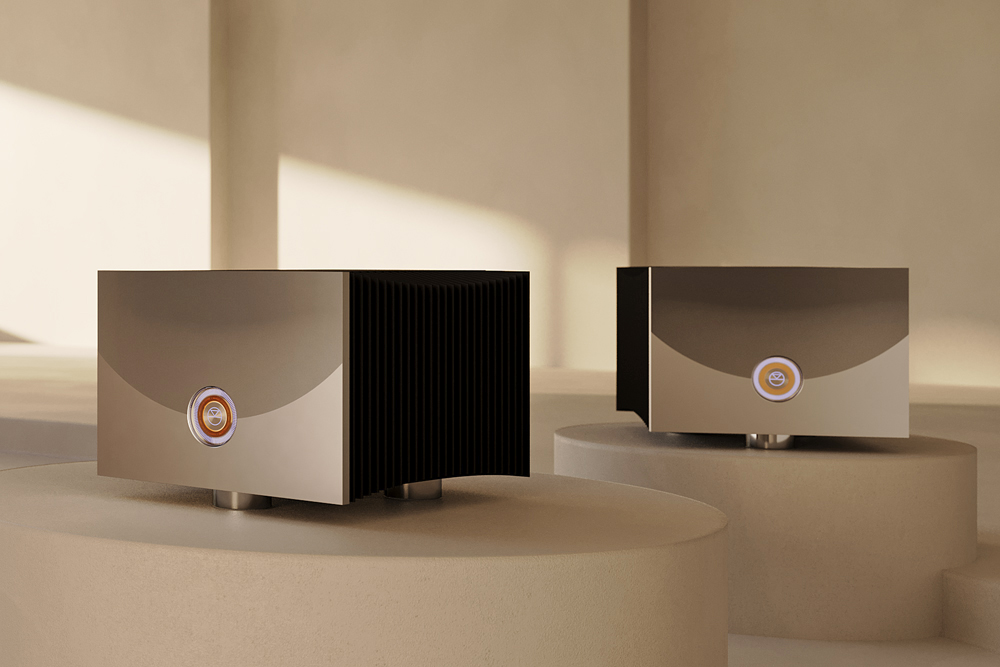Perhaps through sheer innovation, skilled engineering and a tendency to divert from mainstream market conventions, Scotland’s Linn has become one of high-end audio’s most successful brands. Linn stands out from the black box bunch with sophisticated products featuring advanced engineering, elegant industrial design, and proprietary technologies that all trumpet a “We’re doing things our way” ethos. Partly due to that distinctive spirit and through its lengthy history, the company has been fervently embraced by a loyal customer base. Yet, with Linn’s new Klimax Solo 800 monoblock amplifier, it would seem that, on the surface, the company signals its flagship amplification as a more… traditional product. Hmm… that’s not Linn. Yeah, within its elegant chassis lies a stream of innovative technologies which, once again, deviates the Klimax Solo 800 from amplifiers that, in comparison, may seem simply… conventional.
Two is Company
The Klimax Solo 800 amplifiers (two for stereo, of course) are housed in a three-quarter sized chassis. They’re rather tall-ish and somewhat deep, with the width dimension expanded by large heatsinks on both sides. The thick steel top plate is enhanced with precisely machined etchings showcasing the company logo, name and product model nomenclature. The even sturdier front plate is barren except for a large decorative ‘roundel’ that incorporates the company logo and the amplifier’s proud Glaswegian roots. The roundel pulses a backlit LED scheme (comprising 100 individual LEDs!) that activates upon turn-on, then settles to a steady state when the amplifier reaches operational status. The design mirrors the rotary controller on the top panel of Linn’s Network Players, which itself is a thing of beauty.
The rear panel eschews the multitude of often unused connectivity options, providing the required essentials. The 800 offers a balanced/unbalanced switch, the requisite hook-up options via balanced XLR and unbalanced RCA (inputs and outputs for daisy chaining), a small green LED to signal your chosen connection option, truly exceptional speaker binding posts, in/out 12V triggers, a three-position dimmer switch for the front panel roundel, a gold plated earth/ground post, and a C20 20A IEC socket.
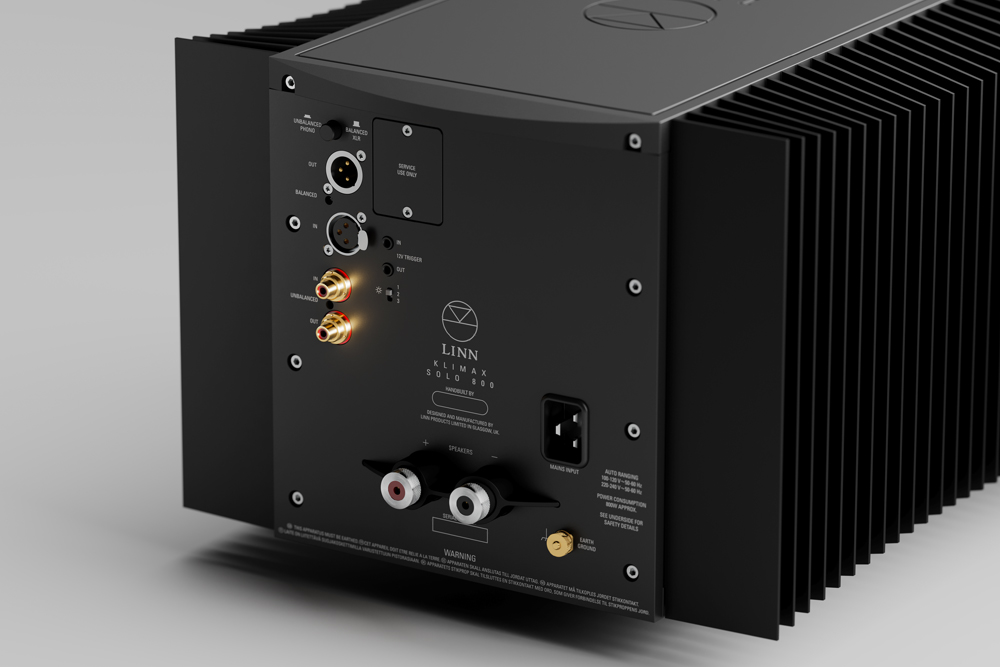
I should reiterate that I really liked the speaker posts. They felt super-solid, accepted both spades and banana plugs, looked rather pretty in their carbon fibre attire and were super easy to securely hand tighten. My only gripe, and it’s a small one, is that my speaker cables, which have solid core stiff ends over the last eight or so inches at the spade end, had to be fitted from above rather than below due to the posts’ position on the lower section of the rear panel. Aside from looking a tad awkward, it’s not a big deal. Your mileage may vary depending on your speaker cables’ flexibility (the obstruction would be avoided if you use banana plugs, of course).
I hinted at the innovations Linn engineered into the Klimax Solo 800 monos. So, for deeper insights into the circuit design, I contacted Linn Senior Electronic Design Engineer Nina Roscoe to ask for clarification on the amalgamation of digital and analogue technologies applied to the Klimax Solo 800, with a particular interest in the Adaptive Bias Control.
The Solo 800 is at heart a discrete, linear, analogue power amplifier engineered for highly linear operation in every component and stage. A linear amplifier usually uses sets of “upper” and “lower” transistors, with the “upper” transistors delivering current into the loudspeaker, and the “lower” transistors sinking current out of the loudspeaker. The challenge of the linear amplifier is the “crossover” point between these two states, with the amplifier “class” determining performance in this region. Class-A allows so much bias current to flow through the output transistors that they never turn off.
Class-B has no bias current, and the top devices are only on once current is positive. The bottom devices are only on once current is negative. The moment when there is no current has no devices on. It’s discontinuous because transistor turn-on and turn-off times are different between individual devices, there’s high “crossover” distortion, which has a high impact on listening as signal is small at this point.
Class-AB has a small bias current which ensures devices are always on. There is a “sweet spot” bias current where “crossover” distortion is minimised. There’s a “sweet spot” bias current which is hard to keep constant without drifting. Transistor voltage to current relationship drifts with temperature and individual transistors have different voltage to current relationships.
Class-AB with good bias current control offers excellent performance, at the same time being capable of delivering high output power to a loudspeaker. Conventional bias schemes, including previous Linn bias control circuits, aim for the sweet spot, but due to variations in individual transistors, and widely changing temperatures, the bias current can drift quite far from ideal.
Our Adaptive Bias Control technique measures the bias point using an analogue circuit and then digitises the result. An FPGA uses this data to implement a digital control loop to hold this measured bias point constant for any transistors and at any temperature, using a DAC and an analogue “floating bias” circuit to convert the FPGA output set point to an actual bias current. Using this method, we ensure the bias is continually held at the ideal value.
In summary then, the audio signal path is entirely analogue, while the digital circuitry works in the background to calculate an ideal value for the analogue floating bias circuit.
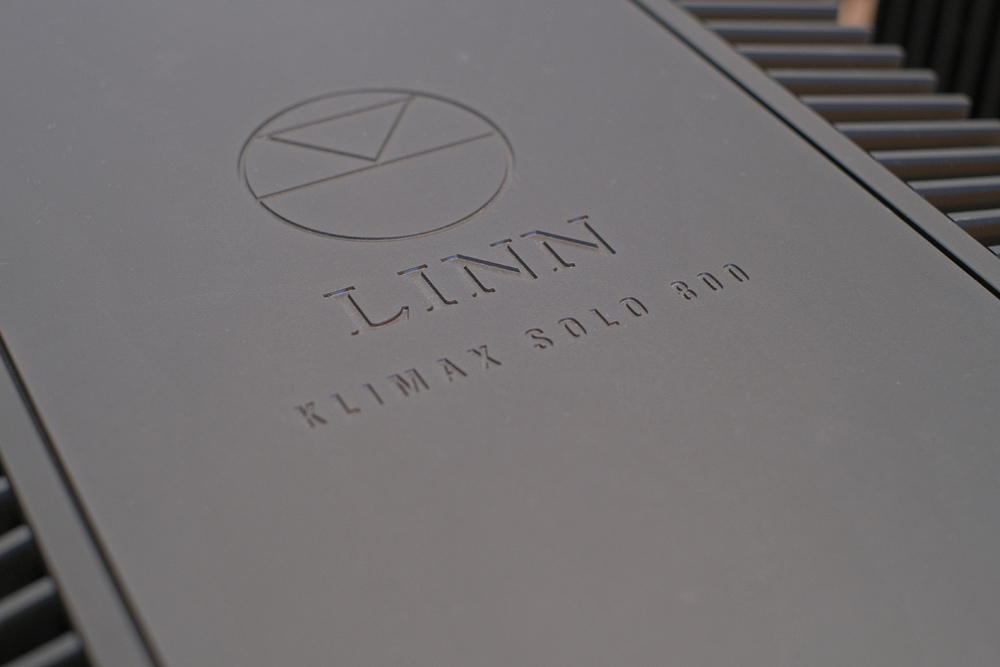
I then asked, what are the core electronic components that comprise the 800’s Utopik power supply and output stage?
The Solo 800 Utopik, like all Linn Utopik PSUs, consists of a power factor correction (PFC) stage followed by a resonant DC-DC converter which delivers the power to the high voltage rails. The Solo 800 Utopik also includes a flyback converter running from the PFC to generate low voltage rails for the lower power amp circuitry.
The PFC ensures that the current drawn from the mains is a pure sinusoid, using a 4th order filter to contain switching noise. The PFC is important because without it heavy distorted currents are drawn by a PSU through the mains cord which can easily couple into the audio speaker output cables through magnetic induction, leading to significant audio distortion. In addition, this “good citizen” approach to the mains protects other audio equipment connected to the same mains circuit from potential power-amp pollution.
The DC-DC converter is a resonant converter, which means that it uses a resonant tank circuit to ensure switching takes place at zero voltage. This is a technique developed mainly to improve PSU efficiency, but which has the enormous benefit of generating very low levels of switching noise. The Utopik DC-DC converter topology also retains tight control of the rails under heavy loading, which is frequently another source of power amp distortion.
Keeping the low voltage rails on a separate converter also eliminates distortion caused by coupling from the high power stage into the sensitive amplifier inputs stages.
Aside from Adaptive Bias Control can you share with readers what other key technologies are built into the Klimax Solo 800?
The Solo 800 has a number of other nice features such as ‘Safe Operating Area’ protection (SOA) which monitors the audio signal and the output current, digitises this information, and calculates when it is necessary to limit output power. Similarly, the clipping circuit monitors voltage rails and input signal and activates only when clipping is imminent. By taking this approach, these circuits are invisible to the audio chain right up until the power level where they are required, in marked contrast to traditional SOA and clipping protection which add nonlinear elements to the power amp directly and erode performance well within the SOA and below clipping.
The design of the heatsinks and venting in the metalwork are key to the Solo 800’s ability to deliver so much power in such a small and elegant case with no forced air cooling. The large heatsinks on the sides encourage plenty of natural air flow easily removing the heat from the power amp. Carefully designed internal venting ensures good air flow past the PSU magnetic components. The PSU must deliver up to 2kW of power to the Class-AB amp in order to deliver 800W into 4ohms, or 1.2kW into 2ohms, so that even with the PSU’s very high efficiency the magnetics would be in danger of getting quite hot without good air flow.
As well as these features the power amp itself has been designed with great care taken with each element to seek out minimum distortion circuit design, use minimum distortion generating components, and then around this optimised amplifier we apply an error correction loop which brings the already small amount of distortion down still further. An important feature is the output stage which consists of eight pairs of parallel bipolar transistors chosen for their extremely linear gain with output power.
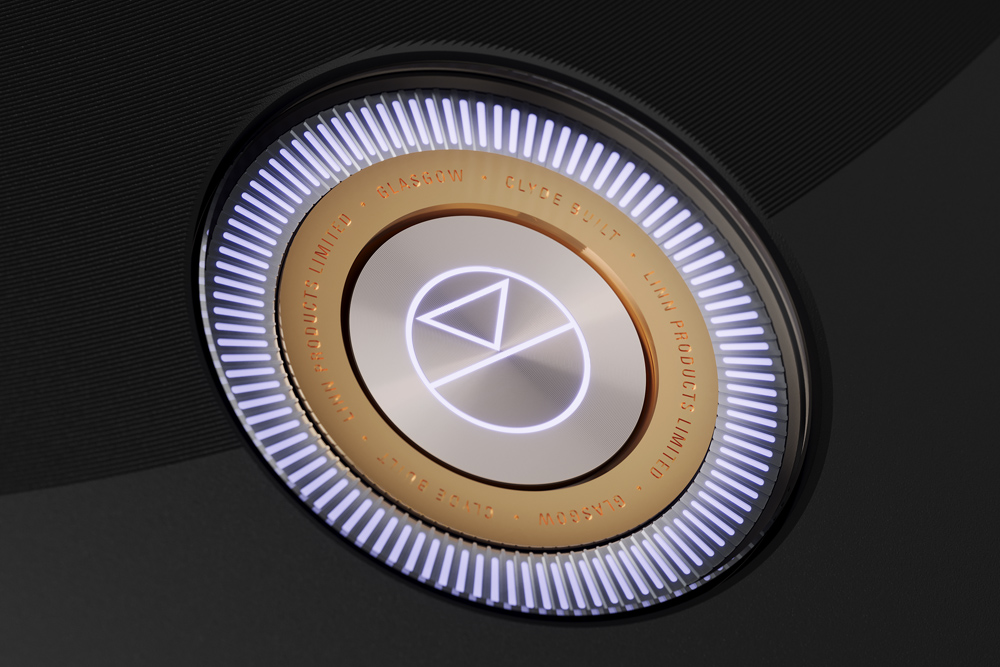
Is the Solo 800 a marked evolution over the Solo 500, or have similar technologies been adapted to a refined topology with more power output?
The Solo 800 is a complete redesign over the Solo 500 in every way. The Solo 500 has been a fantastic amplifier, and in its day was the height of performance available in its category. However, over the 20 years since the Solo 500 was launched, electronic design has advanced in several ways. Understanding of linear audio power amplifiers has developed significantly, component design has improved a great deal, and electronic design tools are unrecognisably advanced today. PSU technology has similarly advanced, and so the PSU is also a complete redesign. Besides these dramatic improvements in electronic design, improved metalwork capabilities were key to the elegant casing and excellent thermal management we have been able to deliver in the Solo 800.
I ran the 800s via their XLR input. Once all connected, it’s a matter of flicking the on/off switch. Hmm… that’s the roundel on the front panel, right? Wrong. Gently pressing that did zip. The actual on/off switch is hidden underneath and towards the front of the 800s. Flicking it on actually brings to life the backlit roundel which, as I mentioned above, flashes intermittently before stabilizing (it may also flash at varying rates to signal a fault of some kind). That’s it. Setup complete.
Linn rates the Klimax Solo 800 as a 400 watts amplifier into 8 ohms, with its 4 ohms rating stated as 800 watts, while the amplifier can drive 2 ohm loads outputting 1200 watts. The 800 has a low output impedance of 0.01 ohms at 1 kHz while Total Harmonic Distortion plus Noise (THD+N) at full power (1 kHz) is given as 0.0005%, 0.0004% and 0.0006% at 4, 8 and 2 ohms respectively.
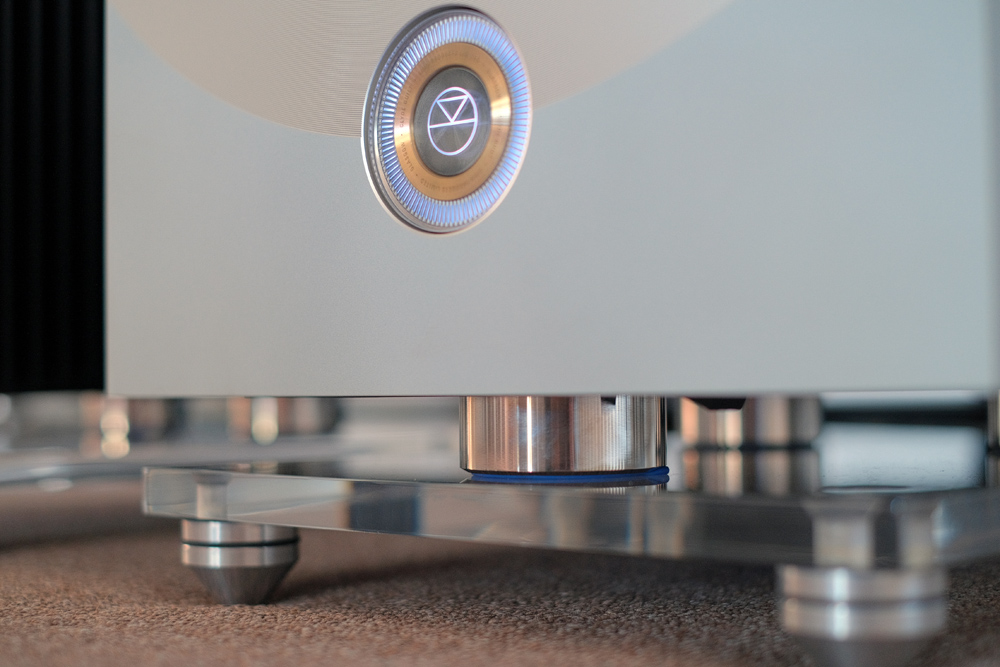
The Klimax Solo 800 monoblocks are designed, built and assembled in Scotland. In line with being a flagship product from a leading audio company such as Linn, the internal componentry, chassis construction, packaging, and all ancillary parts are of excellent quality. Available in silver or black, the beautifully milled, thick anodised front panel design incorporates a curved furrowed pattern mirroring the lower half of Linn’s logo. The different CNC cutter (or cutter angle) used there offers an attractive alternate contrasting tone to the fascia when hit by ambient lighting at just the right angle. Lovely.
Human Intelligence (HI)
The Linn Klimax Solo 800 monoblocks are a fine example of clever engineering with a view to innovating a well over-half-a-century-old amplification technology. These monos present music in a way that is not only technically precise, but also in a manner that renders the technology type redundant. Even the most hardcore tribalist belonging to any amplifier technology camp will have to acknowledge the message here… and that message is music. And it’s potentially reproduced with a purity and exactness that will point a finger at the rest of the signal chain. Yeah, it better be up to it. The better that is, the more music you’ll hear.
The most immediately striking attributes of the 800 monos are the superbly controlled low frequencies and the remarkable sense of music’s rhythmic flow. That last one, you know, is the ole’ PRAT (Pace, Rhythm and Timing). The 800 is a tempo-toe-tapper of an amplifier.
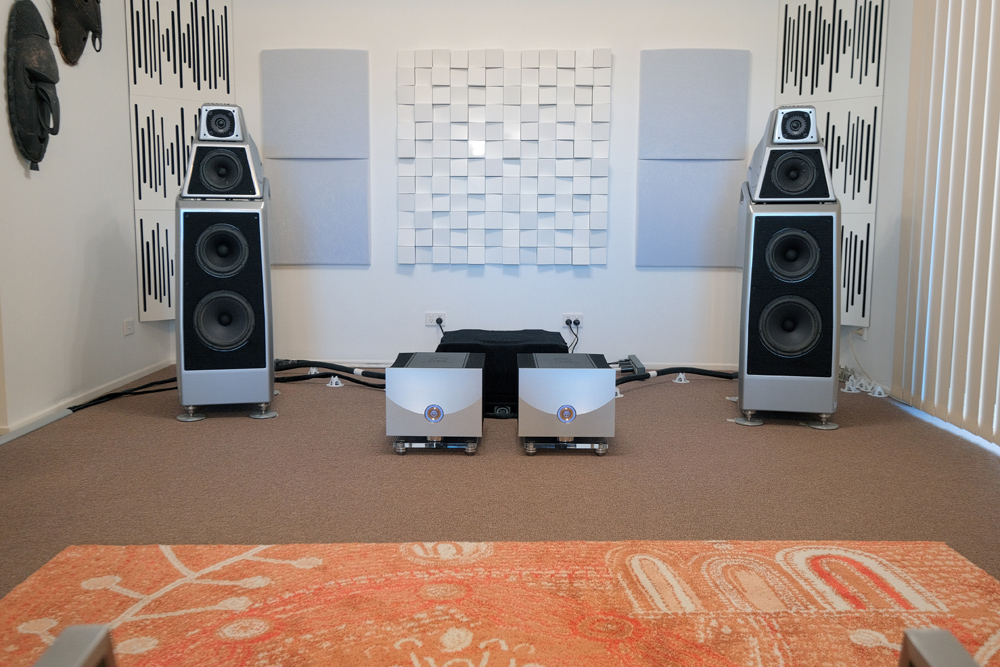
Vital Information’s “Tempus Fugue It”, from the band’s Time Flies album, shows the Solo 800s’ control across the entire frequency bandwidth. The bass solo early in the track features strong transients while the piano stint which follows has all the rhythmic flow and note speed you’d expect from the instrument. The brilliance of band leader and drummer Steve Smith (ex-Journey, the huge ‘70s rock band) shows through the entire album, where his drum sound is always punchy, tight and slamming while mixing those traits with a dexterous control of the skins. Yes, Smith is a superb musician, and he has surrounded himself with equally talented band partners. This is jazz fusion at its slickest. For another illustration of exceptional rhythmic involvement check out “Choreography in Six” from the same album, where Smith’s percussion chops are shown with even more dexterous excellence.
In his live album Songbook, on the track “Like a Stone”, the much-lamented and so-missed Chris Cornell was presented with a forthright vigour, providing even deeper insights into the man’s remarkable, nay, almost supernatural voice. Solo 800 also offered a realistic sense of Toronto’s Queen Elizabeth Theatre, where the crowd noises, claps and woohoos were rendered deeply, wide and tall in terms of their placement in the massive soundstage. The Solo 800’s technical precision locked-in images without wavering as a product of frequency response. Solid as. There was also a natural decay to Cornell’s vocals, which provided a clearer aural rendering of the theatre’s acoustic ambience.
On Mercury Living Presence’s version of Prokofiev’s Piano Concerto № 3, conducted by Kirill Kondrashin recorded in Moscow with the Moscow Philharmonic Orchestra, the “Andante – Allegro” showed the 800s’ capabilities in terms of handling American pianist Byron Janis’ masterful keyboard adroitness. There was a realistic tone which, when coupled to the exacting transients and forceful dynamic expression, provided a convincing presentation. The nine minute portion of the concerto seemed to dissolve the concept of time and, before I knew it, I had gone beyond the opening track and onto an equally lengthy and engaging “Tema Con Variazione”. That is the mark of a well balanced amplification product singing in time with the rest of the system.
The clarity of the acoustic guitar at the intro to “Overlooking”, from percussionist Manu Katché’s The Scope album, serves as a brilliant segue to the superbly controlled bass line, the piano that follows that and, of course, Katché’s powerful drumming. As the track continues with growing complexity, the 800s don’t coalesce into congested homogeny, but instead they clearly differentiate the various instrumental lines with marvellous accuracy and detail resolution. The same applied to the next track “Please Do”, a funky, hip-hoppy toe-tapper which is evidently driven by Katché’s immaculate timing while the subtle vocals were flawlessly separated from the quick-time instrumental pace.
On “Autumn Leaves” from Arooj Aftab’s Night Reign album showed the Solo 800s’ superlative rendering of ambience. It’s a track which mixes elements of jazz and World music in a way that makes it seamless – a tribute to Aftab’s and James Francies’ arrangement and interpretational skills. Aftab’s voice, along with the soft percussive and bass backing instruments had a decay and resonant trail-off which was exceptional in its representation of the venue where this recording took place. It’s worth noting that Aftab was also involved in this album’s recording/production process.
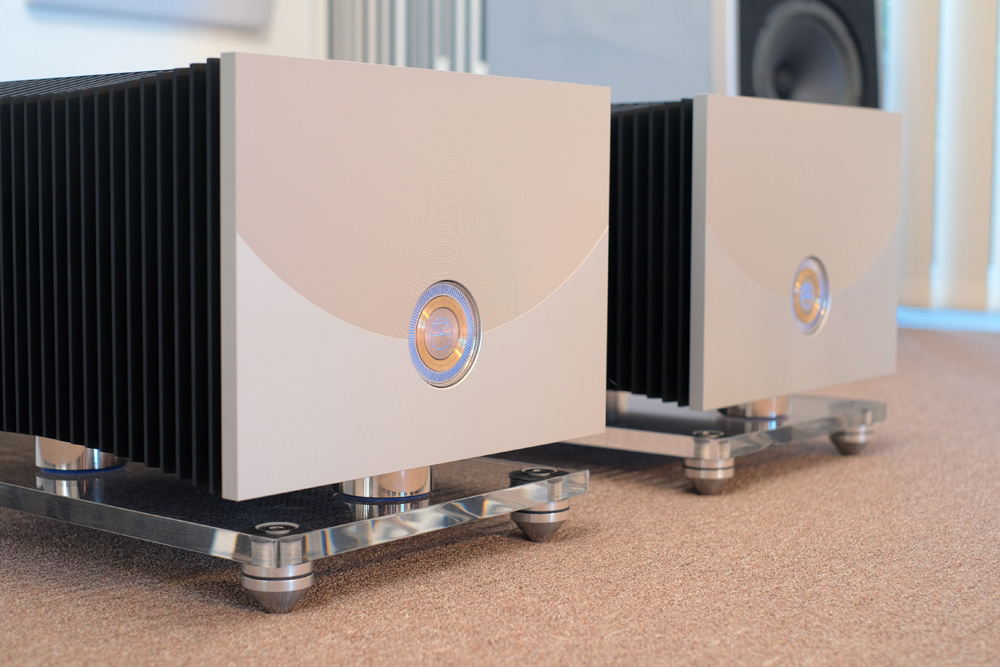
Yes, like I stated above, the Linn Klimax Solo 800 monos are unfussy amplifiers that, nevertheless – and this may seem contradictory – demand quality throughout the signal chain. They are complimentary because they are so neutral, so… uncoloured. What that means, at the end of the day, is that the Solo 800s take on the tonal characteristics of the preceding signal. In my view, feed it with a great, soulful valve amplifier that is rich in tone, yet remains neutral enough (ditto for a great solid state preamplifier, albeit in my opinion that’s harder to attain, but by no means impossible), and you’ll have an amplifier you’ll most likely keep for life.
Conclusion
As far as amplification, the top end of town is actually a somewhat crowded place. There are contenders from all around the world competing for attention (I could easily name 10 brands at similar price points off-the-cuff). They would fit into systems that, as a condition of ownership, require a suitable investment in source/s, preamplification, loudspeakers and, of course, the requisite cabling.
Linn’s flagship Klimax Solo 800 monoblock has forcefully entered the high-end amplifier fray, bringing with it intelligent and proprietary engineering that presents a distinctive point of view within its market position. It’s uncompromisingly neutral, unshakeably powerful and proficiently rhythmic. It will drive the toughest of loudspeakers without raising a moisture bead. Add to that, the Solo 800’s elegant styling and immaculate build quality and you have an extremely attractive proposition in the über high-end space.
Yeah, like rugged Scots clad in tartan kilts with bagpipes a-blarin’, Linn’s Klimax Solo 800 monos make a bold entrance into the Highlands of amplification. Braw!
… Edgar Kramer
This email address is being protected from spambots. You need JavaScript enabled to view it.
Associated Equipment
- Speakers — Wilson Audio Alexia V, Axis Loudspeakers VoiceBox S (nearfield monitor), Vermouth Audio Little Luccas Mk.II Limited Edition, Atacama stands
- Amplifier — Gryphon Audio Antileon EVO
- Preamplifier — Supratek Cortese, Totaldac d1-triunity (periodically, direct to amplifier)
- Sources — Digital: 432 EVO Aeon Mk.3 Reference Music Server/Roon Core, Yamaha CD-S2100 transport, Totaldac d1-triunity DAC. Analogue: Transrotor Crescendo with Konstant Studio controller, Reed 1X Tonearm with upgraded internal wiring, Shelter Harmony cartridge, The Funk Firm Houdini cartridge decoupler, Supratek Cortese & REDGUM Audio RGPH2 phono stages
- Processor — DEQX PreMate (part of arsenal/casual use)
- Cables — VYDA Laboratories Orion Silver Reference HFC IC and speaker cables, PSC Audio custom design XLR, Vermouth Audio Reference loom,Tubulus Concentus USB
- Audio Rack — SGR Audio Statement MODEL V, Aspire Audio Belgravia amplifier platform (customised for Gryphon Audio Antileon EVO), Stereotech Aluminar Dark 3-tier rack
- Acoustic Treatment — Vicoustic Multifuser Wood, Wavewood Ultra, Cinema Round Premium and Super Bass Extreme
- Miscellaneous — Silent Angel Bonn N8 Pro network switch, GigaWatt PF-1 EVO power strip, Les Davis Audio Viscoelastic CLD discs, Voodoo Cable Iso-Pods, Bocchino Audio Mecado, VRC Vinyl Record Cleaning systemplus miscellaneous accessories
Linn Klimax Solo 800 Monoblock Amplifier
Price: AU$153,990 per pair
Australian Warranty: Five Years
Australian Distributor: Advance Audio Australia
+61 2 9561 0799
www.advanceaudio.com.au
Linn Audio
Glasgow Road, Waterfoot
Eaglesham
Glasgow G76 0EQ
Scotland
+44 141 307 7777
https://www.linn.co.uk/
